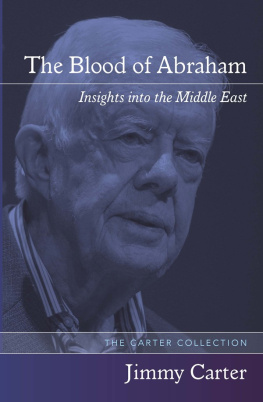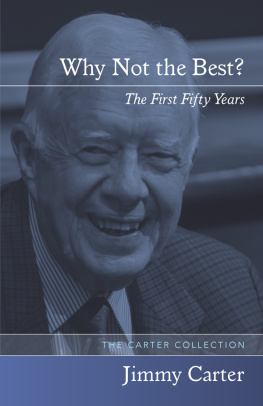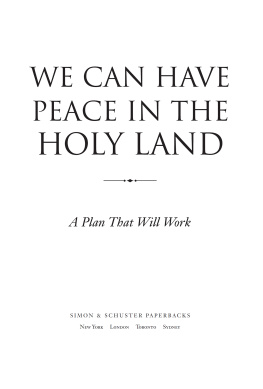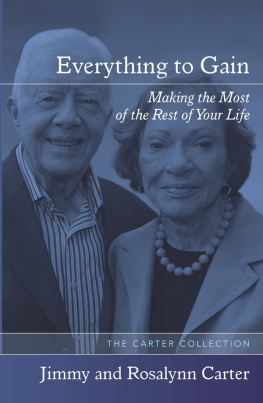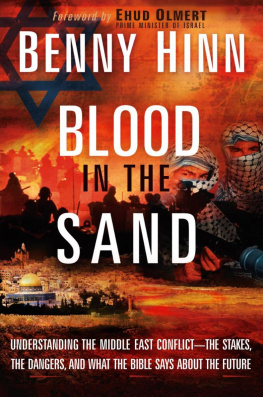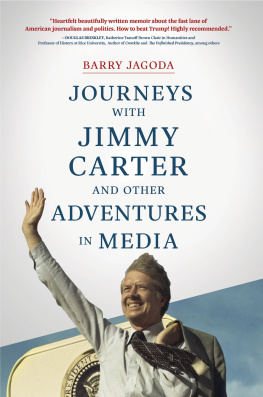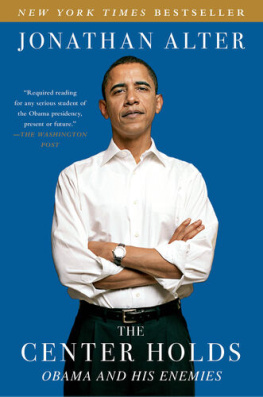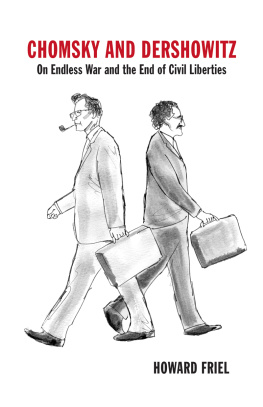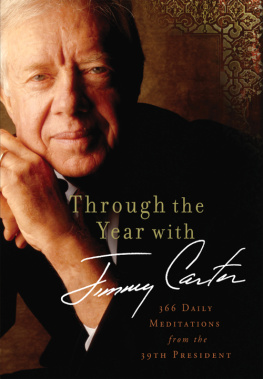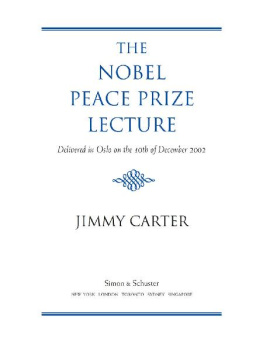Jimmy Carter - Blood of Abraham: Insights Into the Middle East
Here you can read online Jimmy Carter - Blood of Abraham: Insights Into the Middle East full text of the book (entire story) in english for free. Download pdf and epub, get meaning, cover and reviews about this ebook. year: 1986, publisher: University of Arkansas Press, genre: Politics. Description of the work, (preface) as well as reviews are available. Best literature library LitArk.com created for fans of good reading and offers a wide selection of genres:
Romance novel
Science fiction
Adventure
Detective
Science
History
Home and family
Prose
Art
Politics
Computer
Non-fiction
Religion
Business
Children
Humor
Choose a favorite category and find really read worthwhile books. Enjoy immersion in the world of imagination, feel the emotions of the characters or learn something new for yourself, make an fascinating discovery.
- Book:Blood of Abraham: Insights Into the Middle East
- Author:
- Publisher:University of Arkansas Press
- Genre:
- Year:1986
- Rating:3 / 5
- Favourites:Add to favourites
- Your mark:
- 60
- 1
- 2
- 3
- 4
- 5
Blood of Abraham: Insights Into the Middle East: summary, description and annotation
We offer to read an annotation, description, summary or preface (depends on what the author of the book "Blood of Abraham: Insights Into the Middle East" wrote himself). If you haven't found the necessary information about the book — write in the comments, we will try to find it.
Blood of Abraham: Insights Into the Middle East — read online for free the complete book (whole text) full work
Below is the text of the book, divided by pages. System saving the place of the last page read, allows you to conveniently read the book "Blood of Abraham: Insights Into the Middle East" online for free, without having to search again every time where you left off. Put a bookmark, and you can go to the page where you finished reading at any time.
Font size:
Interval:
Bookmark:
The University of Arkansas Press paperback edition published 1993
All rights reserved
Manufactured in the United States of America
978-1-55728-862-2 (paper)
978-1-61075-075-2 (electronic)

The blood of Abraham / Jimmy Carter. New ed.
p. cm.
Includes index.
ISBN 1-55728-293-5 (paper)
1. Jewish-Arab relations1949 I. Title.
DS119.7.C358 1993
954.04dc20
CIP
| c. 9000 B.C. | Human beings leave the first archaeological evidence of their presence at Jericho. |
| c. 3500 B.C. | Urban life develops in Syria-Palestine. Egypt begins its commerce and political involvement in the region. |
| c. 3000 B.C. | King Menes unifies Upper and Lower Egypt into one nation. |
| c. 2300 B.C. | Written records in Syria and Egypt describe the continuing struggles between Egypt and other powers and between nomadic tribes and city dwellers. |
| c. 1900 B.C. | Abraham journeys from Ur to Canaan. |
| c. 1200 B.C. | Moses leads the Israelites exodus from Egypt. |
| c. 1000 B.C. | Saul is anointed as the first king of the Israelites (1022). King David, his successor (1010970), unites the twelve tribes of Israel and wins control of the fertile lands on both sides of the Jordan River as well as portions of Syria. King Solomon, Davids son, builds the first temple in Jerusalem. |
| c. 930 B.C. | The Israelite nation divides into two weaker kingdoms, Israel (ten tribes in the north) and Judah (two tribes in the south). They survive frequent conflicts with their neighbors until Israel is progressively destroyed by the Assyrians (721715); Judah is destroyed in 587 B.C. by the Babylonians, who take many of the Jews captive. This marks the beginning of the Jewish Diaspora, or dispersion. |
| c. 538 B.C. | The Persian conquerors of Babylonia permit the exiled Jews to return to Jerusalem. |
| 332 B.C. | The Greeks, under Alexander, conquer the region. Hellenistic kingdoms in Egypt and Syria struggle for control. Under all their conquerors, the Jews fight to retain their religious freedom and to protect their holy places. |
| 167 B.C. | The Jews revolt results in the establishment of an independent Judea. |
| 63 B.C. | The Romans take Jerusalem and control Palestine but generally permit freedom of worship. |
| c. 4 B.C. | Jesus is born. He is crucified thirty-three years later, after a ministry of three years. Christian churches are established in Palestine, Syria, Asia Minor, and Rome. |
| A.D. 70 | The Jewish revolt against Rome is put down and the Temple in Jerusalem is destroyed. |
| 135 | Following further Jewish revolts, the Romans prevail and lay waste to Judea, killing or forcing almost all Jews into exile. The Romans name the province Syria-Palaestina. |
| 313 | With the Edict of Milan, the Roman Emperor Constantine establishes religious tolerance and, as a Christian, strengthens his own religion throughout the empire, which includes Syria and Palestine. |
| 570 | The Prophet Mohammed is born in Mecca. He establishes the faith of Islam and dies in 632. Within two decades, Moslem rule has spread throughout Syria-Palestine, Persia, Arabia, and Egypt. Some freedom of worship is permitted under Moslem leaders. |
| 1099 | The first Crusaders capture Jerusalem and establish Christian rule over Palestine. |
Font size:
Interval:
Bookmark:
Similar books «Blood of Abraham: Insights Into the Middle East»
Look at similar books to Blood of Abraham: Insights Into the Middle East. We have selected literature similar in name and meaning in the hope of providing readers with more options to find new, interesting, not yet read works.
Discussion, reviews of the book Blood of Abraham: Insights Into the Middle East and just readers' own opinions. Leave your comments, write what you think about the work, its meaning or the main characters. Specify what exactly you liked and what you didn't like, and why you think so.

